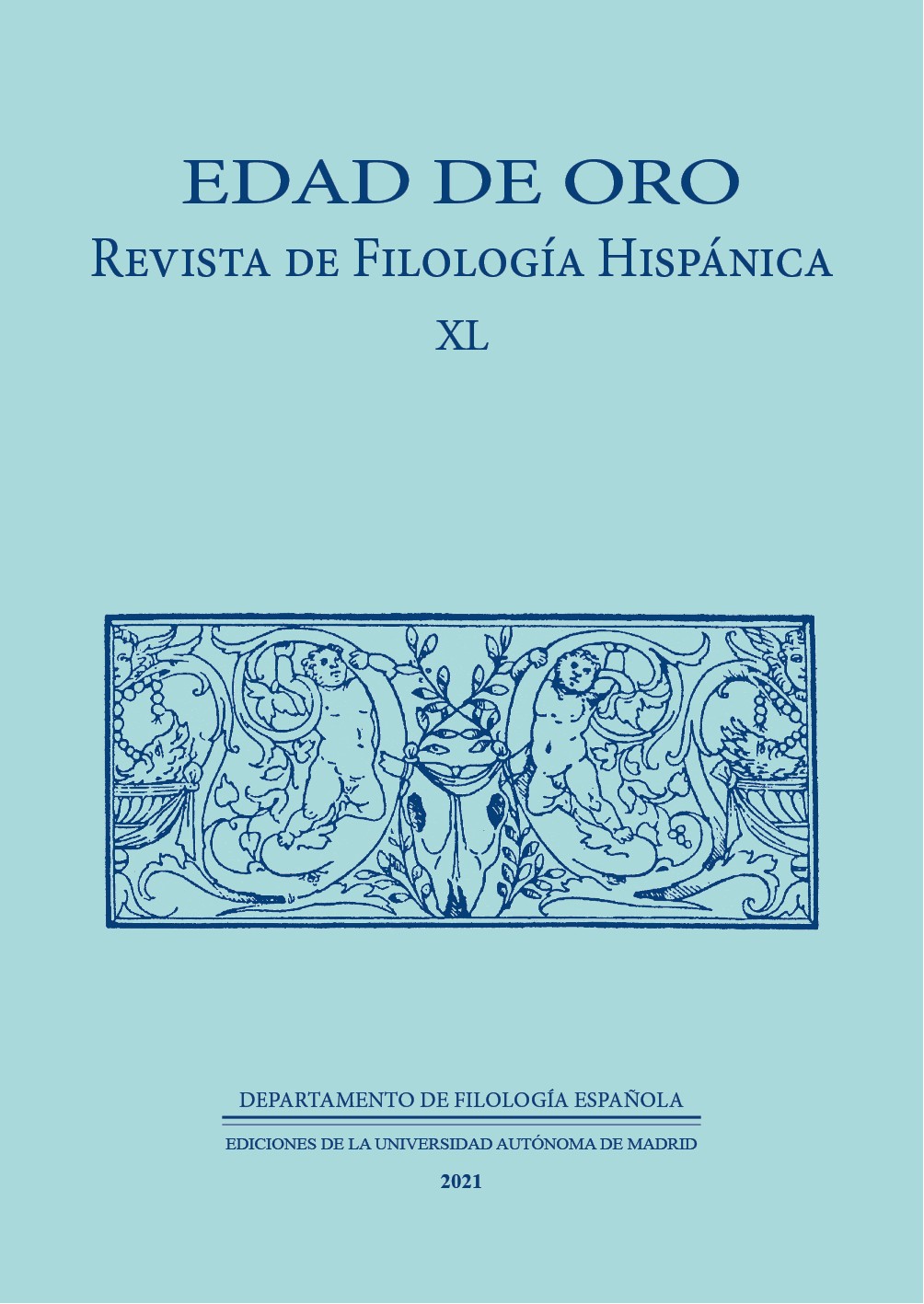The deceptions of Don Quixote. Tension of narratives lines
Keywords:
narrative lines, domestic line, chivalrous line, narrative tensionCopyright (c) 2021 María Stoopen Galán

This work is licensed under a Creative Commons Attribution 4.0 International License.
Abstract
Starting from the first chapter, the diegetic universe of Don Quixote is built on two basic narrative lines that, throughout the story, intermittently maintain a tension between them: the domestic one, formed by characters who share daily life with the hidalgo, and the chivalric one, instituted by the same hidalgo turned knight errant. Throughout the story, in the two parts of Don Quixote, the characters of the domestic line will try to reincorporate the hidalgo to domesticity, for them a promise of sanity, and will use different methods to achieve it. Here I will deal with analyzing those strategies in Part One, as well as the narrative tension they create and the success or failure they achieve.
Downloads
References
BUXÓ, José Pascual (2010). «De las “discretas altercaciones” de don Quijote en defensa de los libros de caballerías». En María Stoopen (coord.), Horizonte cultural del Quijote. Ciudad de México: Universidad Nacional Autónoma de México, pp. 137-149 <http://ru.ffyl.unam.mx/handle/10391/3092>.
CASALDUERO, Joaquín (1970). Sentido y forma del Quijote. Madrid: Ínsula.
CERVANTES, Miguel (1997). «Don Quijote de la Mancha». Centro Virtual Cervantes <http://cvc.cervantes.es/obref/quijote/edicion/parte1/parte02/cap11/default.htm>.
CHEN SHAM, Jorge (2013). «Imposturas del barbero maese Nicolás: disfraces y máscaras». En María Stoopen (coord.), Segundones en el «Quijote»: de personajes, invenciones y otras minucias. Ciudad de México: Universidad Nacional Autónoma de México, pp. 15-27.
RODILLA, María José (2006). «Preludios, correspondencias, reiteraciones y engarces. Claves para una lectura estructural del Quijote». En Gustavo Illades y James Iffland (eds.), El Quijote desde América. Ciudad de México: Instituto de Ciencias Sociales y Humanidades «Alfonso Vélez Pliego» / Benemérita Universidad Autónoma de Puebla / El Colegio de México, pp. 331-346.
STOOPEN, María (2010). «Don Quijote propone: ¿el cura Pero Pérez dispone? Del relato imaginario a la farsa». En María Stoopen (coord.), Horizonte cultural del «Quijote». Ciudad de México: Universidad Nacional Autónoma de México, pp. 187-194 <http://ru.ffyl.unam.mx:8080/jspui/handle/10391/3093>.
STOOPEN, María (2010). «Don Quijote en casa (1605)». En María Stoopen (coord.), Cervantes transgresor. Ciudad de México: Universidad Nacional Autónoma de México, pp. 63-71. <http://ru.ffyl.unam.mx:8080/jspui/handle/10391/3093>.
ZIOMEK, Hienrik (1980). «El uso de los números en el Quijote». En Alan M. Gordon y Evelyn Rugg (eds.), Actas del sexto congreso internacional de hispanistas. Toronto: University of Toronto, pp. 825-827 <http://www.cervantesvirtual.com/obra/actas-del-sexto-congreso-internacional-de-hispanistas-celebrado-en-toronto-del-22-al-26-de-agosto-de-1977/>.
